11 Amazing Things Your Clothes Will Do
Soon your bedroom closet may hold much more than shirts, dresses, and socks.


Soon your bedroom closet may hold much more than shirts, dresses, and socks. Clothing manufacturers are teaming up with scientific and university-based researchers to develop an amazing array of apparel that blends technology and fashion -- highly practical clothing that even fashionistas will want to wear. In the future, "the science and the design -- there can't be a disconnect," says Juan Hinestroza, professor of fiber science at Cornell University.
Athletes, soldiers and hospital patients will be among the first to wear many of the new clothes, but they'll also soon appear on fashion runways and in upscale stores. The innovations will be pricey at first, but the costs are sure to come down over time.
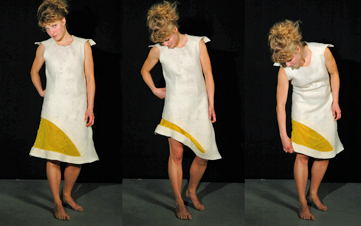
Red Today, Yellow Tomorrow
In the works at Concordia University and XS Labs in Montreal, Canada: clothes that can change the way they look from day to day. The same shirt, showing green on, say, Wednesday, can turn itself into red on Thursday. Or a short skirt can morph into a longer one. The upgradable patterns and designs will likely spell new revenue for clothing companies. They'll sell the initial clothes on the cheap, but new design apps that can change the way the clothes look will cost extra.

Clothes That Sew Themselves
Scientists are working on self-repairing fabrics that will automatically fix punctures and tears in apparel. A rip or a tear in a raincoat, for example, will activate tiny capsules in the fabric to burst and release a sealant that will harden on contact with air. Nike recently partnered with NASA seeking ideas for such self-repairing fabric, which can be commercially viable in two years or so. The fabrics will also use a special coating to withstand chemical abrasion and heavy washing.
Also in the works: Body armor that's just as strong as today's armor worn by soldiers, but is much lighter and easier to wear.Carbon nanotubes are woven together to create a material that's stronger than carbon fiber at a fraction of the weight.

Invisible You
Someday you'll be able to channel your inner Harry Potter by donning an invisibility cloak and disappearing from sight. One potential technology for accomplishing this relies on choleric liquid crystals that react to temperature and light to match background colors. Fabrics will sense the environment and respond with color that matches. Think chameleons, which have transparent skin with a layer of color-changing cells underneath.
Another design from HyperStealth Biotechnology Corp., a Canadian firm, features a cloaking mechanism that renders a person virtually invisible by bending light around him or her.
One clear application: stealth camouflage clothing for the military.
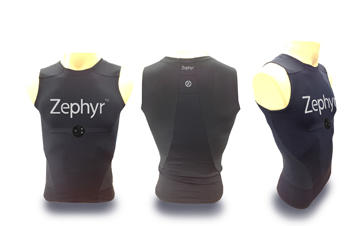
Monitor Your Health
Coming soon: Shirts that measure your heart and breathing rates as you're walking, running, etc. They'll do so through microchips seamlessly embedded in the fabric to collect the data and provide real-time feedback to you or your physician.The shirts will build on current Bluetooth-compatible products, such as BioHarness from Maryland-based Zephyr and Adidas' miCoach product lineup, which includes a sports bra with a heart rate monitor.

Outfits that Knead You
Need a massage? There are clothes in the works that will give you one via embedded sensors that emit buzzes and vibrations. Or they'll rely on sensors to activate tiny liquid pockets in the fabric, hardening them into massaging beads upon demand and softening them when they're not needed. Such shirts will create the sensation of tapping, stroking or pressing. They'll be used first in hospitals and other health care facilities to simulate the therapeutic power of human touch.
Meanwhile, London-based CuteCircuit, a clothing design company, is creating the Hug Shirt, a hooded shirt that can wirelessly send and receive hugs. The shirt uses actuators to replicate the strength and feeling of the sender's hug.

Phone Calls From Your Dress
- CuteCircuit is developing a dress that will feature a SIM card slot, enabling it to work like a phone. The microphone and receiver are in the sleeve. A simple gesture, such as raising your hand, will make or answer a call. The technology is sure to be applied to other clothing, too.
CuteCircuit is also developing a dress that can send and receive Facebook and Twitter messages.
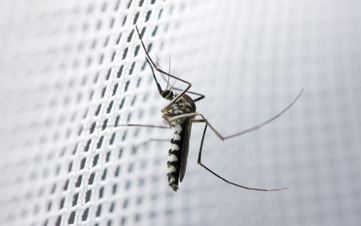
Chase Away Bugs
Enjoy the great outdoors with fewer bug bites and sneezes, thanks to clothes with built-in insecticides, such as the insect-repelling ingredient permethrin. Clothes that can deter mosquitoes and other bugs are especially big news in areas prone to malaria-carrying mosquitoes. No Fly Zone technology from Burlington Worldwide, a North Carolina-based apparel company owned by the International Textile Group, is an early developer of such clothes, which are already commercially available. The clothes are still nearly 90% effective after 70 washes.
Also in the works: clothes that can absorb airborne allergens, making the air around you easier to breathe and to thwart allergic reactions.
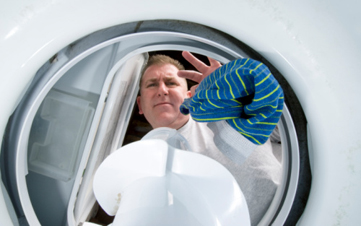
Cut Down on Laundry Chores
Attention, men. Imagine never having to change your boxer shorts again. That's one of the possibilities of next-generation fabrics that kill mites, fungi, bacteria and viruses. They'll eliminate foul odors caused by bacteria, so clothes stay clean and smell fresh without washing. The technology promises to be a big improvement over the current generation of anti-odor sportswear. Baltimore-based Under Armour is already developing anti-odor sportswear.
The military will be a first adopter. Adding nanolayers of chemicals to cotton fibers will destroy toxic pathogens during biological warfare without affecting comfort or durability.

Ward Off Stains Longer
Stain-resistant coatings in today's clothes tend to wear off after repeated use and washings. So manufacturers are working on building the stain-fighting, as well as bacteria- and virus-fighting, properties into the fabric itself. Schoeller, a textile technology company in Switzerland, is creating self-cleaning fabric that keeps its ability to repel even after frequent washing.
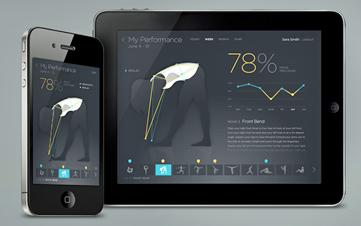
Help Your Golf Swing
Lack the coordination of Tiger Woods or the tactile genius of a master pianist? No worries.
Haptic, or tactile, feedback from conductive fabrics in gloves will help you keep your form with vibrations that will guide your golf swing or your hands on the piano. Meanwhile, they'll record and analyze your movements so you and your swing coach or piano teacher can study them later. From Eeonyx Corp., a conductive fabric company based in the San Francisco Bay Area.
Another idea from Electricfoxy, a design firm, features a garment that buzzes dancers, yoga practitioners and others on the hips or shoulders in real time to adjust -- and improve -- their moves.
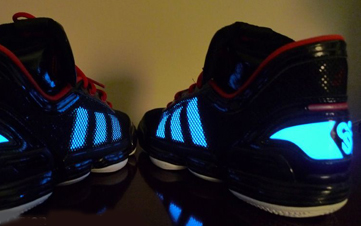
Make You Glow in the Dark
Fabric being manufactured by a number of companies with electronic technology that enables clothes to glow brightly will find practical uses far beyond novelty wear sold at amusement parks. The clothing will be bright enough to let first responders, evening joggers, bicyclists and others be seen without the need for additional lighting. The apparel will be comfortable, with lots of give, and machine washable. Philips has experimented with luminous garments that display texts, graphics or animation as and is now producing luminous textiles that can be used as wall coverings and carpets.
- Dallas-based Oryon Technologies has developed ELastoLite -- a thin, flexible material that lights up and can be used in many applications. Oryon illuminated the futuristic threads seen in the 2010 blockbuster Tron: Legacy. It’s flexible and machine washable, key for widespread use.
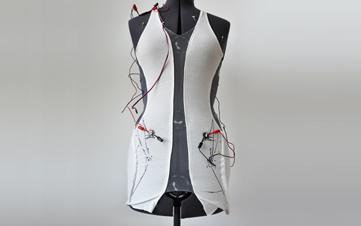
Get Kiplinger Today newsletter — free
Profit and prosper with the best of Kiplinger's advice on investing, taxes, retirement, personal finance and much more. Delivered daily. Enter your email in the box and click Sign Me Up.

John Miley is a Senior Associate Editor at The Kiplinger Letter. He mainly covers technology, telecom and education, but will jump on other important business topics as needed. In his role, he provides timely forecasts about emerging technologies, business trends and government regulations. He also edits stories for the weekly publication and has written and edited e-mail newsletters.
He joined Kiplinger in August 2010 as a reporter for Kiplinger's Personal Finance magazine, where he wrote stories, fact-checked articles and researched investing data. After two years at the magazine, he moved to the Letter, where he has been for the last decade. He holds a BA from Bates College and a master’s degree in magazine journalism from Northwestern University, where he specialized in business reporting. An avid runner and a former decathlete, he has written about fitness and competed in triathlons.
-
 The Best Places for LGBTQ People to Retire Abroad
The Best Places for LGBTQ People to Retire AbroadLGBTQ people can safely retire abroad, but they must know a country’s laws and level of support — going beyond the usual retirement considerations.
By Drew Limsky Published
-
 Financial Planning's Paradox: Balancing Riches and True Wealth
Financial Planning's Paradox: Balancing Riches and True WealthWhile enough money is important for financial security, it does not guarantee fulfillment. How can retirees and financial advisers keep their eye on the ball?
By Richard P. Himmer, PhD Published
-
 Text-Generating AI Faces Major Legal Risks: Kiplinger Economic Forecasts
Text-Generating AI Faces Major Legal Risks: Kiplinger Economic ForecastsEconomic Forecasts Major legal risks to text-generating artificial intelligence: Kiplinger Economic Forecasts
By John Miley Published
-
 32 Ways to Make Money in 2025
32 Ways to Make Money in 2025business Check out these cool side hustles to earn bonus bucks this year.
By Bob Niedt Last updated
-
 12 IRS Audit Red Flags for the Self-Employed
12 IRS Audit Red Flags for the Self-Employedtaxes If you are self-employed, minimize the odds of an IRS audit by avoiding these audit triggers.
By Joy Taylor Last updated
-
 Business Cost Outlooks for 2022: Eight Key Sectors
Business Cost Outlooks for 2022: Eight Key SectorsEconomic Forecasts What’s in store for all sorts of business costs in 2022?
By The Kiplinger Washington Editors Published
-
 PPP Loan Basics for Small Business Owners
PPP Loan Basics for Small Business OwnersCoronavirus and Your Money Although uncertainty and confusion have surrounded the Paycheck Protection Program since its launch, that shouldn't stop small business owners from participating in the loan program, which was just extended to May 31.
By Rodrigo Sermeño Published
-
 Add a VPN to Surf the Internet Safely
Add a VPN to Surf the Internet SafelyTechnology To help you fight identity theft, consider adding a VPN.
By Emma Patch Published
-
 "Above-the-Line" Deductions for Your 2021 Tax Return
"Above-the-Line" Deductions for Your 2021 Tax ReturnTax Breaks If, like most people, you claim the standard deduction instead of itemized deductions on your return, there are still many other tax deductions available that could save you a lot of money.
By David Muhlbaum Published
-
 The Biden Tax Plan: How the Build Back Better Act Could Affect Your Tax Bill
The Biden Tax Plan: How the Build Back Better Act Could Affect Your Tax BillPolitics Depending on your income, the Build Back Better Act recently passed by the House could boost or cut your future tax bills.
By Rocky Mengle Published
